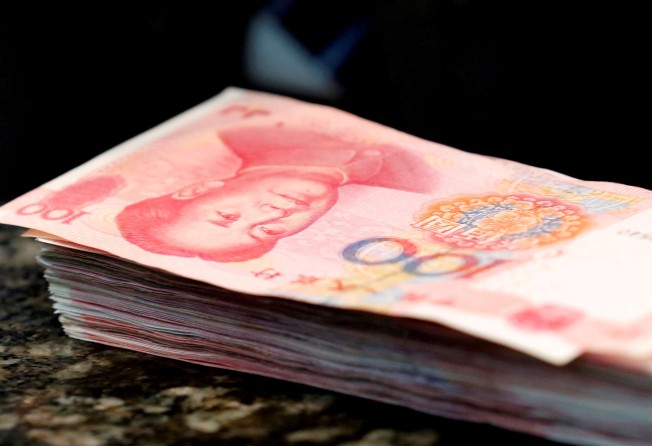Onshore yuan gains as traders return from holidays to a dollar brow beaten by Trump
Chinese currency follows other peers in logging weekly gains against greenback

The yuan rallied against the dollar on Friday on the mainland after a five-day Lunar New Year break, as traders slowly came to terms with Donald Trump’s two-week old presidency and policies that he might introduce, factors which saw the US Dollar Index logging its worst January returns in almost three decades.
The onshore yuan strengthened by 0.17 per cent to 6.8653 per dollar in Shanghai trading on Friday morning before softening to close at 6.8720, up 0.07 per cent.
The rally came after the People’s Bank of China, China’s central bank, set the yuan’s Friday reference rate at 6.8556 per dollar, 32 basis points higher than the fixing before the holidays. Traders are allowed to trade the yuan by as much as 2 per cent up or down from the reference rate’s midpoint.
“The yuan is on a rising track, as are the other major currencies like the pound sterling, the yen, the euro and the Australian dollar,” said Jasper Lo, chief strategist of King International. “Trump is keen on having a weaker US dollar to boost exports. The market expects Trump to blame more countries as currency manipulators and introduce policies that could weaken the greenback further.”
Offshore yuan rates weakened for the second time in five days, dropping 0.14 per cent in Hong Kong to 6.8189 per dollar on Friday morning while it fell further by 0.19 per cent in the evening to 6.8214.
On a weekly basis, the offshore yuan rates, which continued trading in international markets throughout the Lunar New Year, had strengthened 0.66 per cent against the dollar, along with other major currencies that gained against the greenback.
A key US dollar index hovered at its lowest level in more than two months on Wednesday and posted its worst January performance in three decades after Trump and his trade adviser hit out at China, Japan and Germany for devaluing their currencies to gain trade advantages over the US.
The ICE dollar index, a measure of the greenback’s strength against six rival currencies, traded at 99.795 on Wednesday afternoon after touching a low of 99.603 in the morning. It was the lowest level for the index since November 11. For January, the index shed 2.6 per cent, the worst performance for the first month of the year since 1987, when it declined 3.6 per cent, according to Bloomberg data.
The euro weakened against the dollar, falling 0.16 per cent Friday to trade US$1.0740 on Friday evening. On a weekly basis. the euro strengthened 0.56 per cent against the greenback.
The pound sterling fell 0.26 per cent to trade at US$1.2490 after rallying to this year’s high of US$1.2707 on Thursday, aided by reports that Britain’s plan to exit the European Union could face more challenges, Lo said. The pound ended the week down 0.46 per cent against the US dollar after a strong rally of 3 per cent in the pervious two weeks.
The yen weakened by 0.32 per cent to 113.15 per dollar, after reaching this year’s high of 112.06. The Japanese currency had risen 1.65 per cent this week and by as much as 2.3 per cent in the previous two weeks.
The greenback has had a bumpy ride over the past two months after Trump’s election victory, amid growing concerns over the economic implications of his Twitter rants and policies.